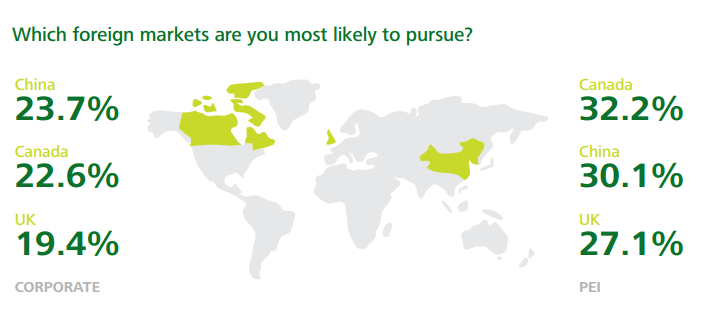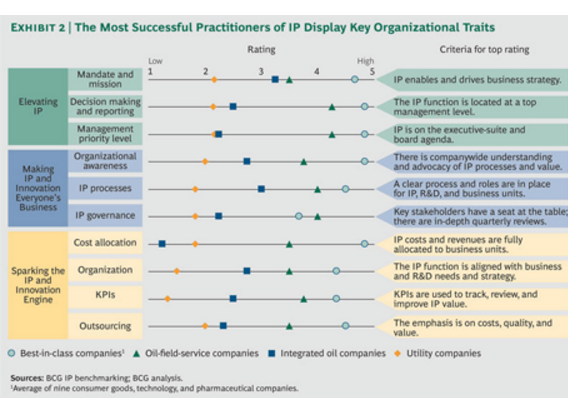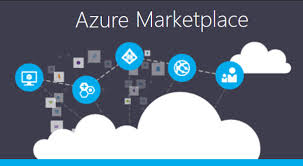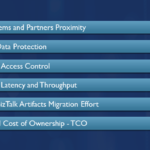On next-generation integration, utility companies & CIO as the rainmaker
Idea in brief
Most of the integration scenarios require complex setup, design and control. And then there’s this need for purchasing proprietary licenses and affording large integration teams. The new cloud-based and developer-friendly integration platforms have changed the way companies are identifying new business opportunities.
“Cloud integration platforms are more programmable, more customizable to handle not only a wide variety of off the shelf apps but a huge assortment of custom apps that were developed within organizations“, writes Crystal Bedlle. Some of the major advantages unlocked by the next generation iPaaS (integration platforms-as-a-service) are:
- Ease of IT integration during M&A
- Productization of IT assets
- Massive operational efficiency improvements
“New API Economy will be changing how users approach solving connectivity problems”, writes Kevin Bohan of TOBICO software. With more than 15,000 APIs already listed on ProgrammableWeb, the iPaaS platforms are evolving fast to cater to the customers new API focus. First, you can use them to connect any application, any data source, and any API, across the entire cloud and on-premise continuum. Second, they help to achieve business objectives never realized before.
Here, I take a look at the potential business benefits promised by the new integration platforms.
1. Ease in Merger & Acquisition
Canada & China have become the top targeted M&A foreign markets among private equity firms. Fig 1 highlights that after the U.S market, Canada, China & U.K are the most attractive destinations for M&A activities.
Fig 1- M&A Trends-BCG

Surprisingly, McKinsey’s Hugo Sarrazin & Andy West write that “many mergers don’t live up to expectations because they stumble on the integration of technology and operations”.
Successful IT integrations deliver 10 to 15 percent cost savings, reports McKinsey. The costs and practical realities of integration have been made easy through integration marketplaces, at least to quickly test the most common use cases in cloud-based integration.
A wider array of integration options through integration marketplaces (such as Microsoft Azure Marketplace, APIhub & AppExchange) are now available to enable cross-platform & cross-application integration. This makes the M&A in IT departments easier than it used to be. You can now use these marketplaces to quickly come up with test-uses case during the due diligence process. As McKinsey points out that “the further upstream the CIO is involved, the more value can be added”.
2. Productization of IT assets
Productization of IT assets is serving both as technology roadmap and business strategy for companies that require complex integration workflows. A promising aspect of this shift is that organizations can share, reuse and resell their IT assets through APIs & IT intellectual property. There are two ways that productization of IT assets helps organizations; as a strategic partner in top line growth & to earn a higher return-over-assets.
IT as a strategic partner in topline growth
Wisconsin Power and Light is a key example in utility sector where business units compete to “own” information systems. Through IT’s help, the company merged all customer utility bills from the company — for gas, water and electricity — into a single bill, reports Victoria Griffith.
Larry Bonfante, CIO of the United States Tennis Association Inc. (USTA) has digitized its 25,000 hours of historical video footage from its 129-year-old marquee tournament. The digitized snippets of the historical video footage are now sold as DVDs, advertisements (“It must be love” commercials) and licensed for online sales.
Another example is Lisa Kent, the chief technology officer (CTO) of Houston Airport System (HAS). Lisa and her 68 member IT-team used Bluetooth-enabled devices and sensor technology to gain a deeper understanding of how passengers move through the airport. The data was then used to erect TV screens showing average wait times for security checkpoints. Another CIO at a Global 100 optical engineering firm is exploring ways to sell his company’s optical designs to other manufacturers down the supply chain.
These are just a few examples of how CIOs are contributing in the top-line growth of their companies. Here are three broad steps that CIOs may take in maximizing monetary value of their IT assets.
- Develop rules for Inbound data
- Give priority to data that creates new wealth
- Comply with official regulations
Higher ROA
Michael Bloch and Andres Hoyos-Gomez of McKinsey & Company highlights that IT generates value at two complementary levels: the core asset value (eg, hardware and software) and the vitally important value-in-use. Hardware is already depleting as IT workflows are increasingly built and deployed over cloud, it is important for firms to leverage their intellectual property, data, skills and processes. This gives them a better return on their fixed and intellectual assets.
However, utilities & large O&G companies have usually underperformed in leveraging their intellectual property. Consider the evidence in figure 2 where Boston Consulting Group shows that utility companies lag behind best-in-class companies, oil-field-service companies, and integrated oil companies in all three categories of IP excellence (Elevating IP, Making IP & innovation everyone’s business and Sparking the IP innovation engine).
Fig 2- IP Performance in different sectors

There are examples where companies have taken a lead to develop & sell their intellectual property to third parties.
In 2003, for example, Shell sold Weatherford its solid expandable tubular technology, which is used in challenging drilling situations, for $140 million.
Another example was observed when Canadian oil-sands company Cenovus Energy developed the SkyStrat, a drilling rig that can be transported by helicopter to remote regions. Cenovus Energy made this technology available to competitors & partners through Canada’s Oil Sands Industry Alliance.
Utility companies can develop their IP assets and share/resell them through the next-generation integration platforms.
3. Operational efficiency improvements
Lowering cost through usage optimization (pay for what you use)
The introduction of metered services (pay-per-use) benefits both parties, the utility company as well as the customer. The utility companies save money as they avoid installing and manually checking older meters. The latter only pays for what they use instead of flat charges.
Lower CapEx requirements
Integrating applications and systems through the cloud, and moving corporate applications like intranets and collaboration platforms over the cloud reduces the typical capital expenditures associated with these IT initiatives.
These are some of the major business benefits that large companies reap when they shift from a traditional on-premise integration model towards a lean cloud-based model.





![BizTalk Migration to Azure iPaaS – Lift & Shift vs Hybrid Integration [Part 2]](https://alliedc.com/wp-content/uploads/2019/11/organ-Wootten-7-150x150.png)

